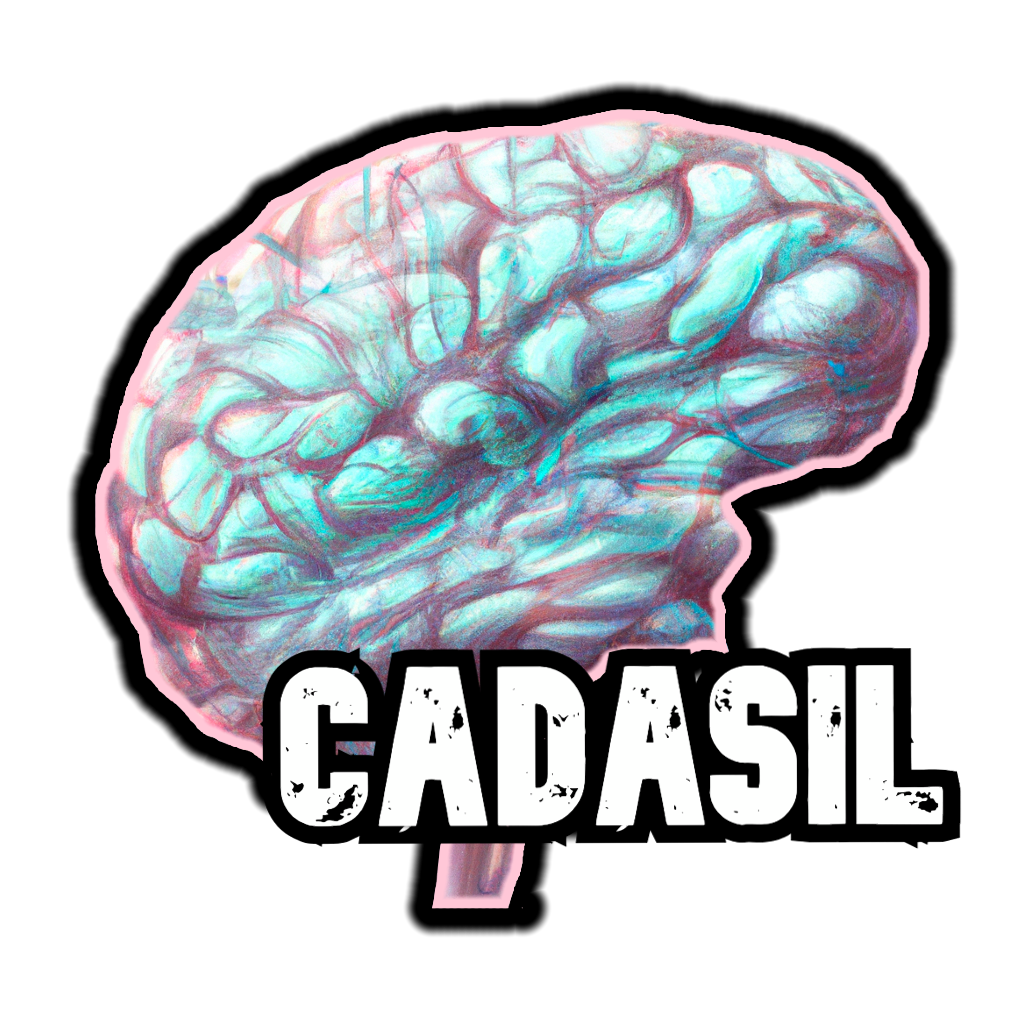CADASIL
Cerebral Autosomal Dominant Arteriopathy with Sub-cortical Infarcts and Leukoencephalopathy
Fact Sheet
CADASIL [PDF]
Genetics
Error in the NOTCH3 Gene on Chromosome 19. This gene is responsible for the development of smooth muscle in the walls of blood vessels.
Cause
Although CADASIL affects all blood vessels, the complications are largely limited to the long penetrating arteries of the brain. The blood-brain barrier is also affected.
Pathology
Autopsies of brains with CADASIL show lacunar infarcts (strokes deep in the brain in the pons, thalamus and brain stem).
Incidence
The rate of disease-causing variants however is somewhere between 1 to 5 in 100,000 people. The prevalence of all NOTCH3 gene variants might be as high as 1 in 300 people.
Onset
Early adulthood but some cases reported in children and adolescents
Clinical Features
CADASIL usually presents with one or more of:
Migraine with aura
Occurs in 50% of patients, usually the first sign, more common in women
The average age is 30 years
Aura usually involves the visual and sensory systems (flashing lights) but 50% have other symptoms as well including hemiplegia, confusion, and hallucinations)
Acute reversible encephalopathy
Occurs in 10% of patients
Manifests as altered consciousness, hallucinations, seizures, weakness, numbness, loss of speech
Usually the symptoms that leads to a diagnosis
Ischemic episodes
Strokes and Transient Ischaemic Attacks (Mini strokes)
Occurs in 85% of patients, the median age is 52 years
Usually a classic lacunar stroke syndrome (Pure motor or sensory symptoms, Hemiparesis, Ataxia-hemiparesis, Dysarthria-clumsy hand syndrome, Sensorimotor stroke)
Cognitive impairment and dementia
Occur in 60% of patients
Lacunar lesions and global brain atrophy on MRI
Usually slow cognitive decline
Psychiatric disturbances
Mood disorders occur in 25 %of patients
Commonly moderate depression, sometimes bipolar, panic disorder, hallucinations or delusions
Apathy is a common symptom, more common in men
Seizures
Occur in 5 to 10% of patients
Evaluation
Suspect CADASIL when classical symptoms present, particularly when there is a positive family history of stroke or dementia, or when there are typical findings on brain MRI. A lack of family history doesn’t exclude a diagnosis.
History and Examination
Thorough standard history with a focus on a family history of stroke, migraine, mood disorders, seizures and dementia. Detailed neurological examination documenting all findings.
Imaging
MRI brain for all patients with suspected CADASIL.
MRI usually shows recent lacunar infarcts, chronic lacunes, and white matter hyperintensities.
There are also temporal lobe and external capsule hyperintensities, subcortical lacunar lesions, cerebral microbleeds and brain atrophy.
Diagnosis
Either genetic analysis or if not available or conclusive, then skin biopsy looking for characteristic changes.
Differentials
Acquired Disorders such as small vessel disease, multiple sclerosis, and PACNS (primary angiitis of the central nervous system)
Inherited Disorders such as Fabry disease, CARASIL, and leukodystrophy.
Management
There is currently no specific disease-modifying treatment for CADASIL :(
Acute Stroke
Managed as you normally would. No evidence systemic thrombolysis improves outcomes after a small vessel stroke in CADASIL but if the stroke is in the territory of a thromboembolic large vessel then it can be considered.
Secondary Stroke Prevention
Control hypertension
Statin therapy if high blood cholesterol
Glucose control if Diabetic
Antiplatelet therapy such as low-dose Aspirin 100mg daily
Smoking cessation
Limit alcohol consumptions
Weight control
Regular aerobic exercise
A Mediterranean diet that is rich in fruits, vegetables, grains, nuts, fish and low-fat dairy.
Symptomatic Therapy
Doneprezil in patients with slowed executive function and processing speed
SSRI for emotional lability in pseudobulbar palsy
Migraine attacks are treated with NSAIDs. Triptans are contraindicated.
Prognosis
Migraine with aura around age 30.
Strokes, TIAs and mood disorders from age 40 to 60.
Dementia between ages 50 and 60
Gait difficulty at age 60
Can be highly variable with some patients being completely asymptomatic until their seventies
Early onset doesn't necessarily mean rapid progression
Life Expectancy
The average life expectancy is 65 years for men and 70 years for women.
References
Fact Sheet
CADASIL [PDF]
